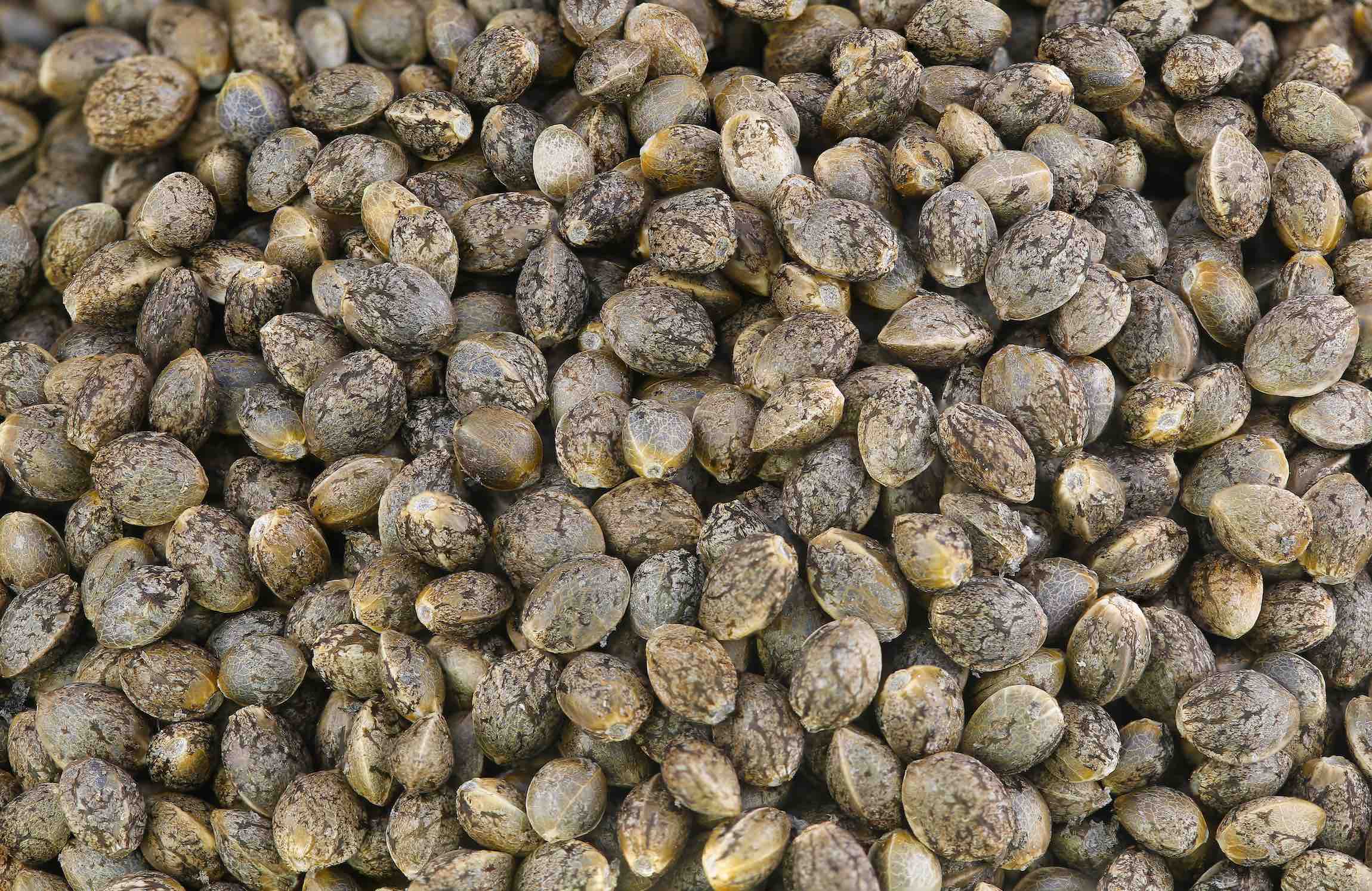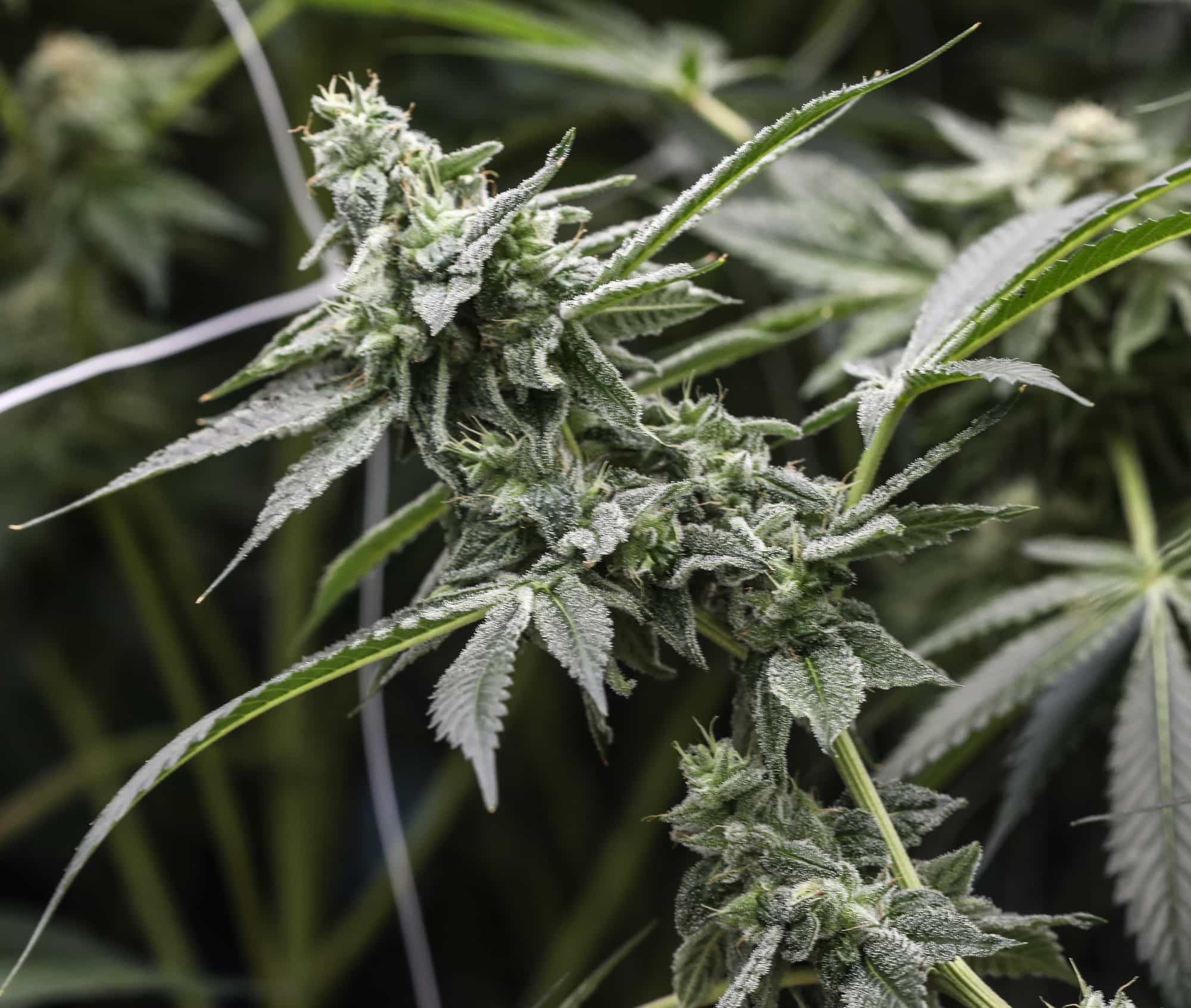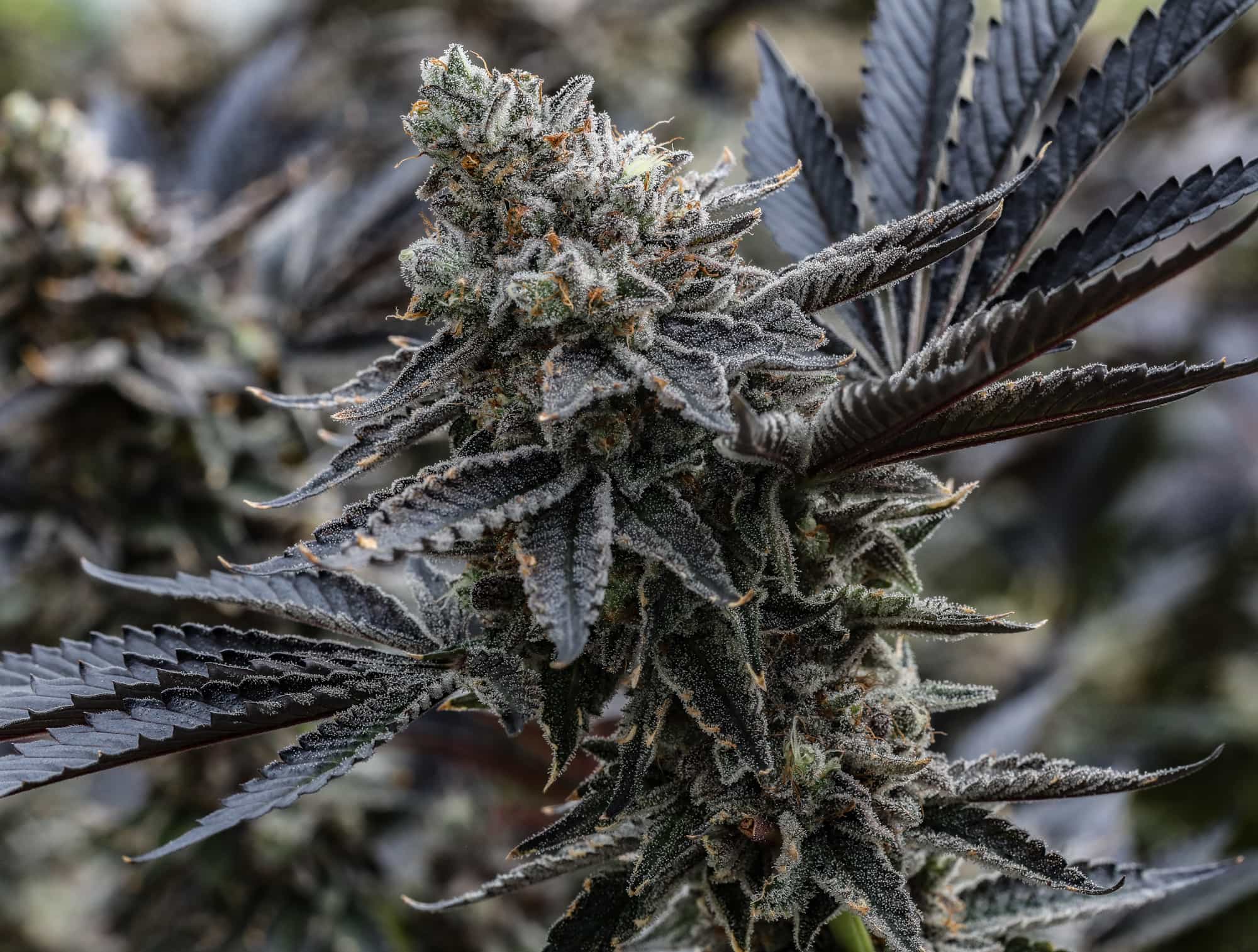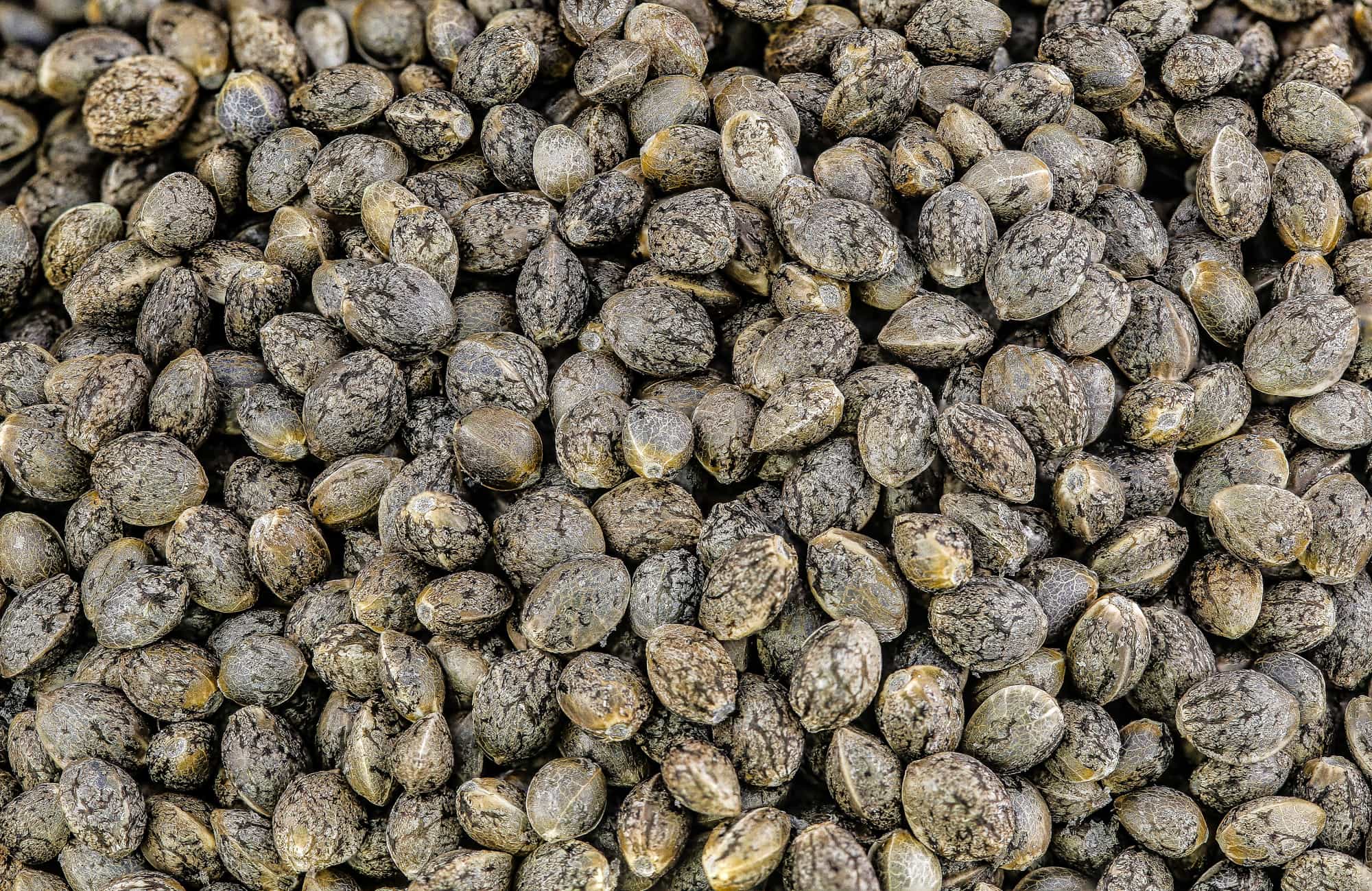

How to Pick the Best Beans
Picking the cannabis seeds that work best for you can seem complicated with the absolute inundation of seeds on the market. We ourselves have over 40 different varieties. Read on for a basic breakdown of cannabis seeds vs clones, and their different types.
Seeds or Clones?
Both seeds and clones have their benefits, but a well bred seed will always outgrow even the healthiest of clones.
Cannabis From Seed
Cannabis plants grown from seed have a healthy start - and don't carry over the pests and pathogens of previous grow rooms. Seeds also have significantly better vigor than clones - meaning they just grow faster. A seed will grow leaps and bounds faster than a cutting without the down time after cloning. Seeds also have a tap root, which helps them stand up better in conditions outdoors. You can frequently see fields of plants grown from seed standing trellis free, while clones always require support. For growers at scale, crops grown from seed are far less likely to be entirely wiped out by a pest or pathogen as slight genetic variabilities mean some bugs will like some plants more than others and not love all equally.
Cannabis from a Clone
Clones are cuttings off of living plants that are rooted. They are a great way to preserve a genetic and to have essentially an exact copy of a plant. Clones are the go to for commercial cultivators in states with legalized cannabis because consumers have become incredibly picky. Every pound has to look identical and when it comes to indoor growing - having all identical plants is easier.
That said clones ALWAYS come with baggage. Be it Hop Latent Viroid Disease, russet mites, spider mites - it is nearly impossible to eradicate every pest or pathogen completely. With issues such as HPLVD, the viral load often builds the longer a plant is alive and cloning a sick plant will lead to more severe symptoms further down the line - even if you can't tell its sick. And don't get us started on Russet Mites.
Clones also do not have the vigor of a seed start. The longer a plant has been kept alive we generally always see significant decline in how quickly it grows.
Pick Your Type
While THC is the first thing people of think of when they hear the word cannabis, it covers everything from feral ditch weed to high THCV strains. It's all cannabis whether it produces CBD, CBG, CBDV, etc. Many in the industry like to break cannabis seeds down by chemotype (what chemical they are dominant in).
Type I Strains:
THC dominant varieties with little or other cannabinoids present, this also includes our THCV strains. Type one plants produce the strongest "High" and generally hit between 10-25% THCa. When combusted the THCa turns into the Delta 9 THC that everyone loves. Don't be fooled by THCA vendors, they are just selling regular weed. All THC strains are THCA strains. You can find our selection here.
Type 2 Strains:
Plants that produce similar amounts of both THC and CBD, also known as 1:1's. Consumers who are overwhelmed by THC may find just what they are looking for with 1:1 strains as the CBD has a tendency to almost counteract the THC. Generally plants hit around 5-10% of both THC and CBD. Type 2 plants are also known to hit some of the highest total cannabinoids of any varieties. We are excited for the future of 1:1's! View our lineup here.
Type 3 Strains:
CBD dominant strains are known as type 3 cannabis. These plants usually produce around 10-25% CBD and minor amounts of other cannabinoids. CBD is an ideal cannabinoid for those looking for the medicinal benefits of cannabinoids - without the intense high. CBD varieties also are known to boast the same aroma and terpene's that traditional THC varieties do. High CBD seeds do always produce a small amount of THC. Browse our CBD seeds here.
Type 4 Strains:
Rich in rare CBG, type 4 plants are some of the newest on the market. These plants tend to produce virtually no THC and high amounts of novel CBG. The medical benefits of CBG are just starting to be researched the future is promising. These often produce a clear headed, energized feeling with reduced anxiety in consumers. Shop our CBG Seeds here.
Varin Strains:
Novel and difficult to breed with, Varin strains are high in THCV, CBDV, and others such as CBGV. These varieties are hard to come by in the industry and are usually present in about 50% of the cannabinoid profile. For example, THCV strains usually have around 50% THCV and around 50% THC. CBDV strains are the same - about 50/50 CBDV to CBD. These varieties produce unique and uplifting effects but are generally longer flowering strains. You can view our lineup here.
Type 5 Seeds: These varieties produce no cannabinoids at all.
Feminized Cannabis Seeds vs Regular
We choose to breed exclusively feminized seeds in our breeding program. This started just to make large scale farmers lives easier - but overall it makes everyones lives easier.
Feminized Cannabis Seeds
If produced properly, feminized seeds produce plants that are 100% female. This means they are all bound to be flower producers and not pollen producers as the male plants do not produce the flowers anyone wants.
In the early days of feminized seed production breeders would take a female with a hermaphrodite flower and use it to pollinate another female plant. While this does produce seeds that are often feminized, the future offspring are often unstable and very likely to hermaphrodite again - which is a nightmare.
We use a process that involves spraying Silver Thiosulfate onto female plants which essentially forces them to produce male flowers. Genetically speaking, every plant is a female - but we generally see about 1/4000 plants as phenotypically male - despite having female X and Y chromosomes. These still need to be culled.
Regular cannabis seeds
produce both male and female plants, and require "sexing" to ensure you are growing what you think you are. Most of the time seeds produce around 50% females and 50% males. Generally speaking plants will exhibit their gender about 5-6 weeks into their lives. Male plants will produce a set of "balls" about 1/4 of the way up a plant and female plants produce two narrow stigmas. One major downfall is plants don't always make their sex obvious and regular seed growers always find a chunk of the plants they thought were females are males. Not only do regular seeds mean you have to take care of double the amount of plants for half the amount of keepers it can also mean some late season male discoveries. Its usually the biggest plant as well.
Regular seeds are a fine option if you are looking to breed your own.
Autoflower Seeds vs. Photoperiod
Most cannabis varieties are photoperiod sensitive, meaning they will grow until the amount of daylight hours they receive become short enough the plant thinks summer is coming to an end and its time to produce flowers to reproduce. This is usually around early August when day lengths have dropped to 12 of light, 12 hours of darkness. Autoflowers cannabis will switch into flower - generally around 4-5 weeks after the plant sprouts - regardless of how many daylight hours it receives.
Autoflower Cannabis Seeds
Autoflower seeds have caught a lot of attention recently, especially for homegrowers. These novel plants can be stuck in the ground in May in the northern hemisphere for a ripe crop by July. They are also a fun option for people looking to grow smaller plants that don't take up the space of a full season plant. Autoflower seeds are also an excellent option for people growing in far northern or southern hemispheres where daylight hours are very long in the summer, but fall weather comes on before traditional varieties would mature. Autoflowers generally reach maturity in around 65-90 days after the seed has sprouted.
That said autoflower cannabis varieties are difficult to grow. They are hardwired to flower at the first signs of stress and take lots of care and attention in their early days. Allowing plants to become rootbound when they are very young is one of the most common issues, and generally leads to growers having a 6" tall plant on a stick. Either planting seeds directly into their final home, or careful attention is necessary to prevent yield losses. Autoflowers also have a tendency to produce lower amounts of cannabinoids and are less consistent plants than full season plants as they are always produced from two plants from seed. Autoflowers cannot be cloned - clones will always die. We do offer a few varieties here.
Photoperiod Cannabis Seeds
Full season or photoperiod sensitive cannabis strains are ideally planted outside in late spring, grow vegetatively for several months, and flower as day lengths shorten in late summer. These plants put on the biggest yields and are more consistent than autos. Photoperiod plants grown from seed must still reach sexual maturity before they can flower - which is usually when plants are about 5-6 weeks old, or around 1-1.5 feet tall. We often recommend full season plants to farmers growing in late summer, or in areas that never receive more than 14 hours of daylight. Plants will perform essentially like an autoflower by growing vegetatively for 5 weeks and flowering for 8 - with significantly more consistent growth and production.
F1 vs F2 vs Polyhybrid vs S1 Seeds
F1 Hybrid Seeds
F1's are produced when two very genetically different, but inbred lines are crossed. In making F1 seeds a breeder must inbreed one parent over many generations to narrow down the gene pool as much as possible. This also allows them to select the plants with the most desirable characteristics to breed with further down the line. With cannabis, breeders can usually go around 4 generations of inbreeding (Selfing). After one parent is selected, the same process is done with another parent. After both inbred lines have been selected, the two plants are crossed to produce an F1. These are the most consistent and vigorous of all seeds. There is essentially only 1 phenotype and virtually every seed is a keeper.
F2 Seeds
F2's are when a cross is made with an F1. The genetics will be a hodge podge mixture of both parents with very little consistency - and lots of different genetic expressions from both parents. F2's are fun for those looking for something unique, but definitely not consistent. Expect large variation between plants.
S1 Seeds
S1's are when a breeder "Self's" a plant, or self pollinates it. This can be done by using sprays that induce male flowers on a female plant - which allows one plant to pollinate itself. Depending on how inbred the line is, there is always some variation to the offspring but a great option for seed selection. This is a fun way to preserve clone only strains.
Polyhybrid Seeds
Polyhybrids are what the majority of seeds are currently on the cannabis market. A breeder just takes 2 plants they like, with little knowledge of their lineage or genetic make up, and makes a cross. This once again creates a wide array of genetic expressions in the offspring and virtually no consistency. You may find a keeper in every pack - but you may not find any.
Flowering Time
Flowering time refers to how long a plant will spend flowering after it has been induced and is a very important factor to consider. Most varieties vary between 7-12 weeks of flowering time, or around 50-100 days. This is a huge spread - and in general the shorter flowering plants are much easier to manage.
If you are in a region that experiences heavy frosts or heavy rain in early fall, you will definitely want to go for varieties with shorter flowering times. Bad weather when plants are at peak maturity can ruin a crop very quickly. One hallmark of our breeding program is early maturation outdoors. Our varieties tend to switch into flower in mid July which allows them to mature mid September. They still spend between 7-9 weeks flowering - but they initiate earlier than traditional varieties which often kick into flower in early August.
Varieties that mature in 10-12 weeks of flowering time can be some of the most interesting on the market but they come with major difficulties. Not only from fall weather, but also dwindling sunshine and temperatures. Unless you are in somewhere very warm and dry that doesn't have many freezes - keep it under 10. Also long flowering plants cost a lot more indoors to get to peak maturity.
Diploid vs. Triploid Cannabis Seeds
Diploid Seeds
Cannabis plants in the wild are almost entirely diploids. Meaning they have two sets of chromosomes from each parent. This is what everyone is used to growing.
Triploid Seeds
In 2020, we pioneered the first commercial triploid cannabis seeds. These varieties have 3 sets of chromosomes from one parent, and 2 from another. It follows in the food steps of many agricultural crops and is really useful technology.
We see bulked up production, better resin content, and plants do not like to make seeds. These variaties are a great option for those looking to grow the biggest plants, flashiest flowers, or must grow in areas with cannabis pollen present. i.e. male populations nearby. While they produce very little seed, they still can produce some. These are our chosen varieties for CBD, CBG, CBDV, THC, and THCV smokeable flower production.
We are thrilled to be the first company to release triploid cannabis seeds and while we love them, they aren't necessary for everyone. If you are growing strictly for extraction purposes, triploid seeds aren't necessary. The seeds cost us a ton of money and not as cost effective as traditional diploids. They also don't necessarily produce higher amounts of cannabinoids. If you just want a few plants in your back yard for salves, balms, etc - or if you are farmer growing millions - they just aren't necessary.
Aroma aka "Terpenes"
Terpenes has become a huge buzzword in cannabis, but at the end of the day they are only responsible for around half of the aromas in cannabis. Cannabis plants produce a vast myriad of volatile compounds from alcohols and esters to adelhydes and ketones that all influence the aromas. While it can be easy to look at a terpene analysis and expect to know what a flower smells like - but that is not the case. For example, there are no terpenes that produce the skunk aroma or the fuel aroma. These are produced by other compounds. You can find 2 flowers with virtually the same exact terpene results that have entirely different smells. Use what a breeder describes to pick your flavors and not what dominant terpenes are present. Lots more information on this here -->
Indica vs. Sativa vs. Hybrid
Cannabis plants were at one point thought to have multiple species based upon where they were growing. "Indica" referring to fat leafed, short squat, large flowered plants growing in the arid mountains of the Hindu Kush - and Sativa which grew in the lowlands and had longer skinnier leaves, smaller flowers, and longer flowering times.
Fast forward hundreds of years and the theory was smashed. Science uncovered they are all the same species, Cannabis Sativa L. Unfortunately the geography based classification has not been smashed and is still used frequently today. In addition, because every cannabis strain on the market is a mix of a pile of different strains, there is absolutely no such thing as a pure "Indica" or pure "Sativa." Even in the lands where cannabis grows wild, varieties have been introduced from across the globe altering the entire gene pool. Our co-founder Seth Crawford just helped author a really interesting paper on the cannabis pangenome that goes a lot more in-depth on geography. Its definitely worth checking out.
In terms of using these classifications to describe effects, this is another grey area. Indica is used to refer to flowers that give users a feeling of sedation and relaxation. Sativa is used for those that give users uplifting and energizing effects. Hybrid is used to describe flowers that gives users uplifting and sedative effects.
While it seems simple and straight forward, these classifications are simply a marketing ploy. Cannabis is subjective, and every user experiences every cannabis flower differently. The effects themselves are steered by the aroma compounds and have absolutely nothing to do with whether the plant had big fat leaves or long skinny leaves.
In general, we try to stear completely away from using these classifications and believe the users nose knows. If you like the smell, it likely is a strain that you will enjoy. Find one that helps you relax, and stick to others with similar characteristics.







